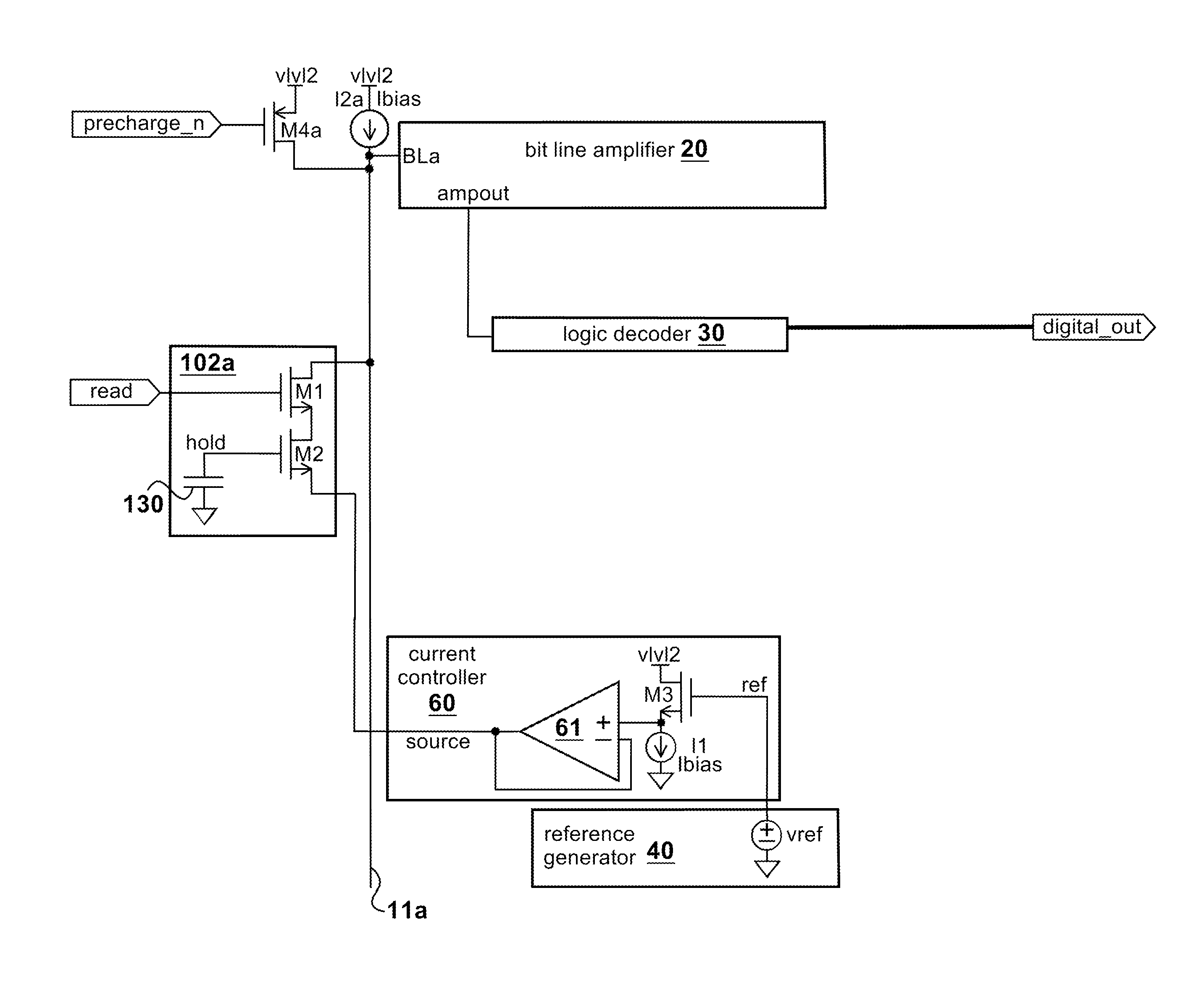Memory architecture with a current controller and reduced power requirements
a memory architecture and controller technology, applied in the direction of information storage, static storage, digital storage, etc., can solve the problems of increasing design cycle time and manufacturing costs, reducing read access time, and previously used 3t or more recent 1t architectures are functionally capable, etc., to reduce power consumption, increase memory capacity, and reduce read access time
- Summary
- Abstract
- Description
- Claims
- Application Information
AI Technical Summary
Benefits of technology
Problems solved by technology
Method used
Image
Examples
Embodiment Construction
[0126]To better understand the inventive concept and its departure from the prior art, a brief review of the prior art will be instructive.
[0127]FIG. 1 shows a block diagram for a common 1T structure of prior art. The read process of the 1T consists of the following basic steps. In the initial condition, the closed precharge input switch 2a causes the read bit line 1a to hold to the voltage value vref. At the start of a read, the precharge input switch 2a opens causing the read bit line to float at vref. Next, the read input to bit cell 5 is asserted and the switch 4 in bit cell 5 closes. The charge on the storage capacitor 3 in bit cell 5 is shared with the charge on the read bit line and the voltage of the read bit line is defined as
ΔVBL=(vhold−vref)*(CS / (CS+CBL)) (Eq. 1)[0128]where ΔVBL=VBL−vref, VBL is the read bit line voltage referenced to ground, vref is a reference power supply input and vhold is the voltage on the hold node, CS is the value of the bit cell capacitor, CBL i...
PUM
 Login to View More
Login to View More Abstract
Description
Claims
Application Information
 Login to View More
Login to View More - R&D
- Intellectual Property
- Life Sciences
- Materials
- Tech Scout
- Unparalleled Data Quality
- Higher Quality Content
- 60% Fewer Hallucinations
Browse by: Latest US Patents, China's latest patents, Technical Efficacy Thesaurus, Application Domain, Technology Topic, Popular Technical Reports.
© 2025 PatSnap. All rights reserved.Legal|Privacy policy|Modern Slavery Act Transparency Statement|Sitemap|About US| Contact US: help@patsnap.com



